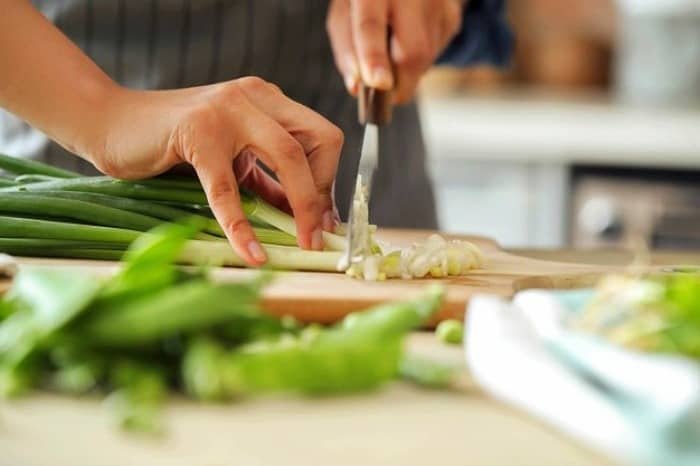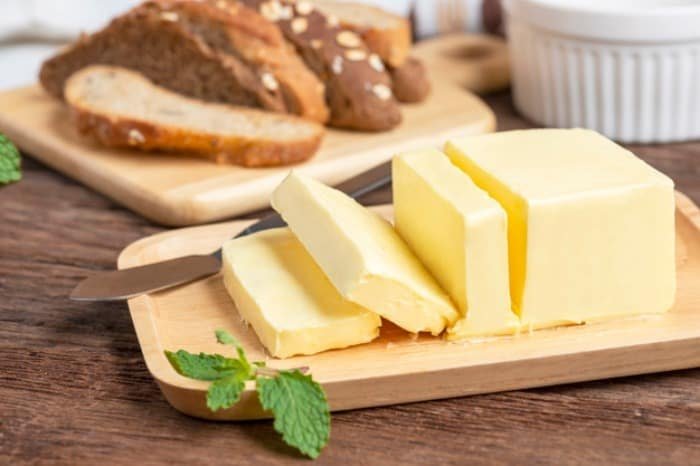Your common mistakes in cooking and food preparation
Every woman loves cooking and doing it as a favorite task at home for her husband and children. However, there are things to follow to achieve better cooking; there are certain common mistakes in food preparation that can lower the quality of the meal, which means you won’t enjoy your food as you should. In this section ofSelMagzwe will discuss some of these.
Small but impactful mistakes in food preparation and cooking
Not reading the recipes before starting:
In our era, accessing recipes and ingredients, especially if studying online, is easy. You can enhance your cooking skills by avoiding the common habit of making assumptions. To give yourself the best chance of success, read the recipe completely before you start. Not only will you know what is needed for the meal, but you will also understand how much budget you need.
Using an inappropriate cutting board:
Small cutting boards may look cute, but aside from chopping a few strawberriesand preparing a drink garnish, they are not very useful.Tip: Give yourself enough space to work and make sure the cutting board is large enough for the task. Breaking and chopping is much easier than when everything is on a tiny board.
Using the wrong knife:
Cooking mistakes:Before picking up a knife, think about what you are cutting. Are you chopping something small like garlic? Or are you dealing with something larger like a whole chicken? You might want to use a knife you prefer to chop your ingredients.Tip: Always use the appropriate knife for chopping. Don’t think of your chef’s knife as a universal knife. In a home kitchen, this tool differs when slicing meat, fruits, and vegetables compared to cutting bread with a serrated knife.
Using a busy countertop:Not only will you be less efficient when your workspace is cluttered, but this also increases your risk of food contamination.Tip: A clean workspace allows you to organize your tasks and save time.
Adding ingredients to a cold pan:

In many cases, it’s better to heat the pan first, then add oil and food. However, some people add oil and food to a cold pan and then place it on the stove. Food should never go into a cold pan; ingredients like oil or butter can get soggy and are more likely to stick to the pan.
Tip: Ensure that the pan and oil are hot before adding the ingredients. A hot pan helps prevent food from sticking.
Cooking meat straight from the fridge:
No matter if it’s beef, veal, chicken, or fish, never place it directly from the fridge or freezer into an oven or hot grill. The result could be a piece of meat that may not be completely cooked.
Tip: Take meat and fish out of the fridge and let them sit at room temperature for about 15 to 20 minutes. Bringing protein to room temperature allows it to cook evenly.
Not seasoning food while cooking:
Forgetting to season food as a cook will leave you with a dish that is bland, tasteless, and unbalanced. This is a huge blow to a meal that could otherwise be really delicious.
Tip: Seasoning all ingredients in a dish makes it more flavorful, and the ingredients will absorb each other’s flavors.
Overcrowding the pan is a cooking mistake:
When you overcrowd the pan, not only does the temperature drop, but there is too much moisture, leading to steaming instead of browning and resulting in uneven cooking.
Tip: Use a appropriately sized pan for the amount of food you are cooking. When cooking meat, ensure that none of the pieces touch each other; there should be space between them.
Not tasting food while cooking:
Cooking without tasting is like writing a book without revising it. Waiting until dinner is served on the table may not result in the flavor you want.

Tip: Taste the food while cooking and add more seasoning and spices if needed. Don’t be afraid to taste your food again.
Not resting meat after cooking:
You may be hungry and want to eat quickly, but if you cut into the meat right after taking it out of the oven, its juices will spill all over the cutting board or plate.
Tip: Allow cooked meat on the stove or grill to rest for at least five minutes at room temperature.
Overcooking vegetables:
Timing is crucial here, as vegetables are often prepared before the other foods. Add your veggies to boiling water or a steamer for just three to seven minutes.
Green beans, asparagus, carrots,
cauliflower,
and Brussels sprouts
all turn vibrant colors with a crisp texture, but if they are boiled or steamed too long, they will become soft and mushy.
When cooking is finished, plunge the vegetables into a bowl of ice water or run under very cold water to stop the cooking process. Drain the vegetables and cover them with foil to keep warm until serving.
Common mistakes in cooking and food preparationWilting salads:Salads, especially green salads, tend to wilt after a few hours and lose their original shape.To preserve the taste and appearance of your salad, consider the following tips:If you wash your vegetables, they must dry before mixing the salad because excess water can make the dressing watery, and salads with oil will leave oil sitting on water instead of combining with the ingredients.When the salad is made, do not add dressing until just before serving. Pour the dressing alongside the bowl when preparing the salad; this prevents the dressing from mixing in too early. Keeping the salad cool before serving will make the vegetables look fresher.Using inappropriate oils:
If you are trying to cook a balanced meal, you probably have included healthy oils in your cooking. However, healthy oils like

olive oil
have low smoke points and can produce a lot of smoke when heated. Even worse, healthy oil can break down under heat, becoming unhealthy. Here are a few considerations before buying cooking oils:
Choose your oil based on only two factors: flavor and smoke point. First, consider whether you will use it for salad dressing, frying, or cooking. Unrefined oil will have a lower smoke point, making them unsuitable for high-heat frying. However, they are usually packed with rich flavors, making them suitable for salad dressings or vegetables.
Olive, walnut, flaxseed,
avocado,
or almond oil
are all different choices with distinct flavors that can enhance the taste of the salad. Other good options with a milder flavor include
grapeseed oilor canola oil.For frying or cooking, refined oil with a high smoke point is a better option. Opt for oil with a neutral flavor. In the previous section of household tips, it was mentioned that
sesame oil
might be great for frying Asian foods, but its rich flavor is not suitable for baking cakes.Sesame andcoconutoils are highly flavored oils with high smoke points. Healthy oils that remain stable at high heat and have neutral flavors are canola,peanut,and sunflower oils. Avoidcorn oil
with its high saturated fat content andsoybean oil.Unfortunately, this process also creates trans fats, which are not healthy for individuals.Melting butter:Cut some butter and place it on a plate; let it sit at room temperature for 5 minutes, then proceed with your recipe. Another aspect is if the butter is too soft; if so, just put it in the refrigerator for 5 to 10 minutes to firm up.
Melting butterthe right way to boileggs:Add the eggs to boiling water and let them cook in hot water instead of starting in cold water; then remove them from the water. This helps in shell separation. Adding one or two tablespoonsof vinegarwith a pinch of salt makes a difference; one teaspoon per three eggs will suffice.Do not overcook, and when cooking is finished, immediately place the eggs in cold water and let them cool for 15 minutes before peeling. Do not use fresh eggs. If you buy local eggs, let them sit for 10 to 14 days as fresh eggs always stick to the shell.Overcookingpasta
is another cooking mistake:
Pasta has a delicate texture and can become mushy very quickly. Boil a package of pasta in one and a half liters of boiling water and stir to prevent the strands from sticking together. Always remember to boil pasta in a large pot.

Not giving cooking time to rice:
Rice is one of the most commonly eaten grains in a large portion of the world’s population. However, cooking a fluffy rice dish remains a big challenge, and many cooks complain about mushy rice. Rinse the rice thoroughly under cold water to wash away any milling residues andexcess starch.Make sure the pot is suitable, and as soon as the water starts boiling, reduce the heat gently and keep the lid slightly open. Cook white rice for 20 minutes and
brown ricefor 30 minutes. When the cooking time is up, turn off the heat and allow the rice to steam for another 10 minutes. This resting period captures the steam and finishes the cooking process.Cooking mistakesCommon cooking mistakesTypical cooking mistakes
Most frequent cooking mistakes
Errors in cookingCommon mistakes in the kitchenMelting butter
Butter melting tips
Strawberry benefits
Cooking mistakesHelpful food itemsCooking mistakes
Errors in cookingGreen bean benefitsCauliflower benefits







